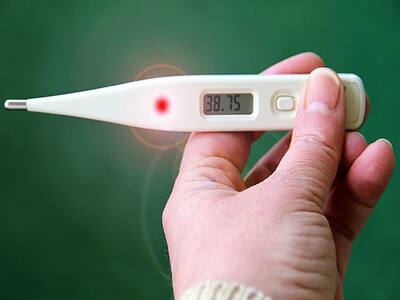
This season has been the season of flu and fever with cornucopia of cases coming each day. Since there are multiple cases coming each day, there’s a need to make people aware of the viral fevers and all they should know about it.
The incessant rain and changing weather conditions welcomed many diseases. This season has been the season of flu and fever with cornucopia of cases coming each day. After experiencing high rainfall in the monsoon, country has seen some continuous rise in viral fever cases.
Since there are multiple cases coming each day, there’s a need to make people aware of the viral fevers and all they should know about it
Let’s know what a viral fever is!
A fever is defined as a body temperature higher than the normal 37 degrees Celsius (98.6 degrees Fahrenheit). Elevated temperatures indicate the body’s defense mechanism against viral or bacterial infections. Generally, a temperature above 98.6 F is considered a fever. Fevers are often an insinuation that our body is fighting off an underlying viral or bacterial illness. Viral fevers are mostly triggered by viral infections.
Symptoms of Viral Fevers
Viral fevers can vary in intensity, ranging from 99 F to over 103 F, depending on the specific virus involved. Common symptoms include chills, sweating, headache, muscle aches, dehydration, weakness, and loss of appetite. These symptoms usually last for a few days.
Causes of Viral Fevers
Viral fevers result from infections caused by viruses, tiny infectious agents that multiply within body cells. Fever is the body’s natural response to combat viruses. Viruses are sensitive to temperature shifts; an increase in body temperature makes the environment less favorable for them. Viral infections can occur through inhalation, ingestion, bites from insects/animals, and contact with infected bodily fluids.
Diagnosis of Viral Fevers
Distinguishing viral and bacterial infections can be challenging due to similar symptoms. Doctors often eliminate bacterial infections first. They consider symptoms, medical history, and test samples for bacteria. For instance, a throat swab can detect strep throat bacteria. If negative, a viral infection is likely. Blood or bodily fluid samples might reveal markers indicating a viral infection, such as white blood cell count.
READ RELATED: Jennifer Aniston Just Shared a Workout That Proves 54 is the New 24
Treatment of Viral Fevers
Viral fevers typically don’t necessitate specific treatment like antibiotics, which target bacteria. Instead, focus on alleviating symptoms: using over-the-counter fever reducers (acetaminophen, ibuprofen), resting, staying hydrated, and occasionally employing antiviral drugs like oseltamivir phosphate. Lukewarm baths help lower body temperature.
When to Seek Medical Attention
Mild viral fevers usually pose minimal concern. However, temperatures of 103 F (39 C) or higher warrant medical attention. The same applies to babies with rectal temperatures at or exceeding 100.4 F (38 C). Critical symptoms requiring medical assistance include severe headache, difficulty breathing, chest pain, abdominal pains, frequent vomiting, rapidly worsening rash, stiff neck with pain when bent forward, confusion, and convulsions/seizures.
Conclusion
Viral fevers, characterized by elevated body temperatures due to viral infections, are part of the body’s immune response. Symptoms range from chills and sweating to muscle aches and loss of appetite. Diagnosis involves ruling out bacterial infections through symptoms and tests. Treatment primarily focuses on symptom relief, with no antibiotics involved. Seeking medical attention becomes necessary for high fevers and critical symptoms. Understanding viral fevers aids in timely and appropriate medical intervention.
Total Wellness is now just a click away.
Follow us on
Don’t Miss Out on the Latest Updates.
Subscribe to Our Newsletter Today!
window.addEventListener(‘load’, (event) => {
$(‘#commentbtn’).on(“click”,function(){
(function(d, s, id) { var js, fjs = d.getElementsByTagName(s)[0]; if (d.getElementById(id)) return; js = d.createElement(s); js.id = id; js.src = “//connect.facebook.net/en_US/sdk.js#xfbml=1&version=v2.3”; fjs.parentNode.insertBefore(js, fjs);}(document, ‘script’, ‘facebook-jssdk’));
$(“.cmntbox”).toggle();
});
});









